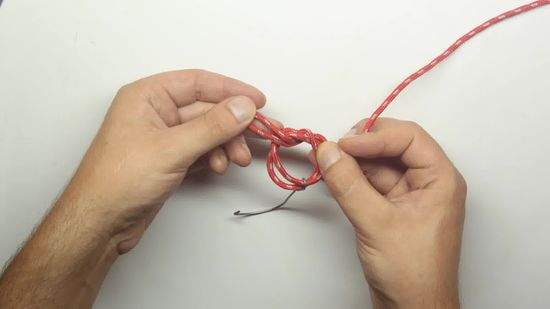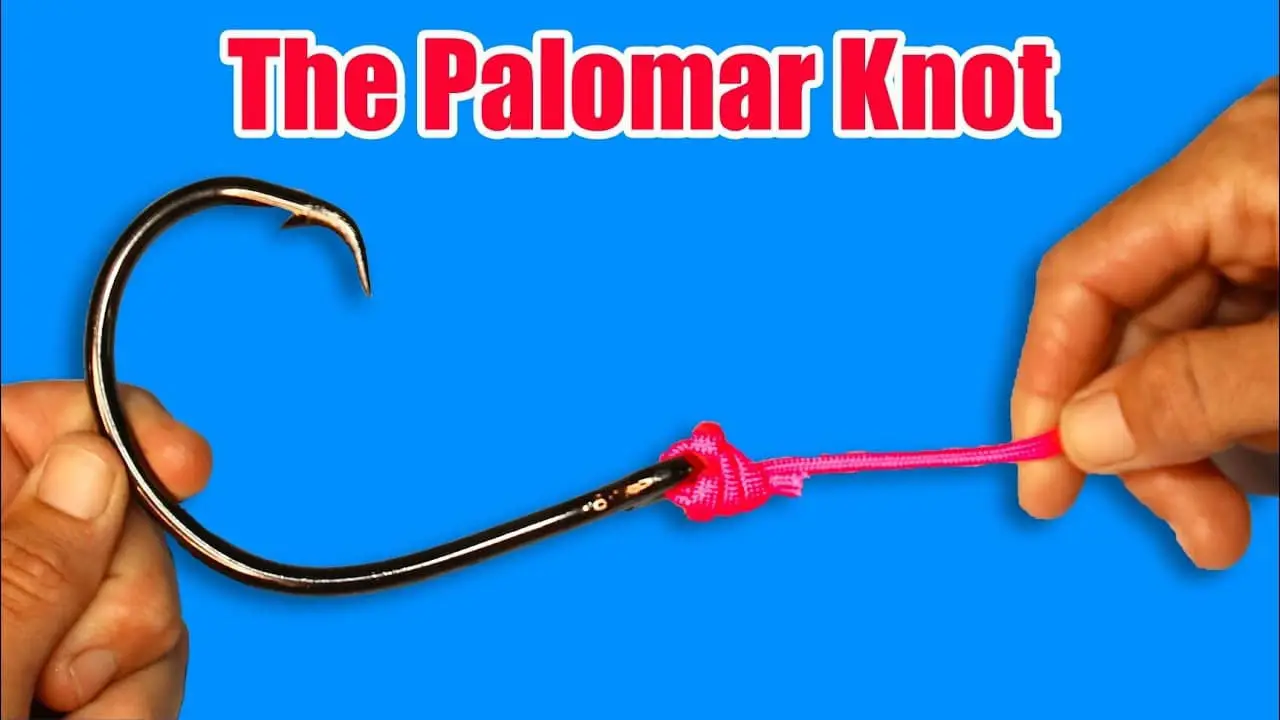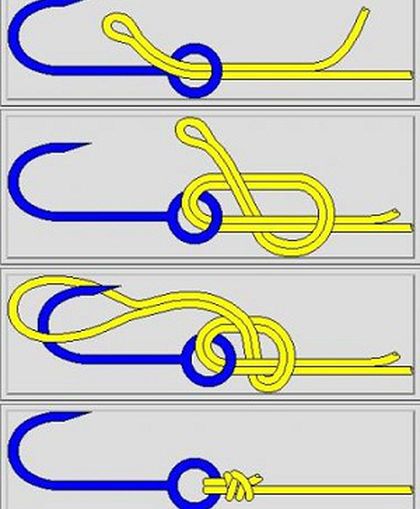When it comes to fishing, having the right tackle is not enough. What you need more is the essential skills of an angler. Among these, knowing how to tie a Palomar Knot is definitely top of the list. It is simple to perform yet could bring about impressive results when fishing and help you get a full bucket.

Are you interested in mastering the art of Palomar Knots? Get yourself ready and stick with us until the end of this article.
Contents
What Is A Palomar Knot? Why Should You Learn To Tie A Palomar Knot?
Palomar Knots refers to the double-lined knot used in fishing gears, which attaches a fishing line to a lure (or swivel or snap, depending on the situation).
While there are multiple fishing knots for anglers to pick out, from Uni Knot to Trilene Knot or even Surgeon’s Knot, a Palomar Knot is still regarded as the best, especially for beginners.

First of all, a Palomar Knot cannot easily break or pull away. In fact, many people believe when done correctly, a Palomar Knot is foolproof and will always do the trick. Therefore, a Palomar Knot is your number one choice should you want to hunt down larger fish.
Secondly, A Palomar Knot is inarguably among the easiest knots to tie. You do not have to be an expert, and you can still get this thing done after a few times practicing. Plus, most Palomar Knot tying instructions include no more than 6 steps, so no lengthy guidelines at all.
That is not to mention the versatility of a Palomar Knot. A Palomar Knot can deal with it all, whether the fishing line is monofilament, braided, or fluorocarbon. Even better? The application of Palomar Knots goes beyond angling. If any real-life situation pops up that requires fastening a rope with a loop (for example, you might want to tie a dog leash), a Palomar Knot will come into handy right away!
How To Tie A Palomar Knot (Step By Step Instructions)
What to prepare
Before settling down to tying a Palomar Knot, make sure you have at least 1 foot of line. This is just to make sure you have plenty to practice with. And if there is an error, you can still have the excess line for a redo. Furthermore, you need an eyelet of any form. It can be from your hooks, lures, swivels, jigs, or snaps, etc.

Detailed instructions
Step 1: Pass the line through the eyelet
Fold the line into a double line, forming a loop at one end. Then, slowly push the loop from one side of the eyelet to the other.
If the eyelet is too small for a double line to go in all at once, consider passing the line through it first. Afterward, pass the end of the line back through the eyelet from the opposite direction for a loop.
Step 2: Tie an overhand knot
Adjust the position of the line and the eyelet to leave the hook hanging right at the bottom. Tie a loose overhand knot with the doubled line. Make sure there is a big loop on top, and be careful now to twist the lines.
Step 3: Pull the loop through the hook
Using your thumb and your index finger, slide the created loop over the dangling hook. Remember to place the loop over the eye of the hook, not its shank.
Step 4: Finish the knot
From both ends, pull the line as tight as you could and cut off the tag end if it is too long. In case you cannot secure the knot onto the eye, try dampening the line for better results. And ta-da, your Palomar Knot is ready to use!
4 Reasons Why You Fail To Tie A Palomar Knot
Although tying a Palomar Knot is relatively effortless, you can still make mistakes and compromise its quality. So watch out for the following errors and try to avoid them.
The line used to tie the knot is not in perfect condition
Throw away all the tattered or frayed fishing line, as it is the recipe for failure here. Do you want your Palomar Knot to have 100% of its capacity? You have to use a sturdy line.
The tag end is way too short
Though highly unlikely, a tag end shorter than the required measurement (usually around ⅛ of an inch) can tamper with your tying process.
The line is too dry
Dryness causes excessive heat and friction, resulting in weaker performances of your Palomar Knot. Thus, wetting the line beforehand is an ideal precaution.
The knot is not properly cinched
After sliding the loop over the hook, remember to use your strength and fasten things down. Some knots end up breaking because there is not enough pressure applied in the first place.
- Two strands of the line are twisted. A Palomar Knot draws its power from the double line. So naturally, if the two strands somehow cross upon each other or get tangled, the knot is doomed.
FAQs
How strong is the Palomar Knot?
A Palomar Knot is effective up to 95%, which means it is almost impossible to fail when tied correctly.
Which fishing line would be most suited for a Palomar Knot?
If you want to make the best out of a Palomar Knot, go for the braided line. It can increase the efficiency rate of the knot compared to the original strength by 24%, while that of the monofilament is 15.8%. The final position belongs to the fluorocarbon line, with its full capacity at only 100.7%.
Conclusion
For all of the advantages listed above, it is no wonder why you should learn how to tie a Palomar Knot. Mastering this top-notch knot will undoubtedly improve your finesse as an angler and make the fishing games even more fun.






